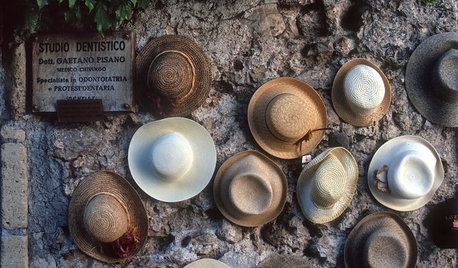Natural / Bonsai soil?
ssadams7700
13 years ago
Related Stories

ARTThe Beauty of Bonsai — Living Art, Rooted in Harmony
Create your own emblem of nature's balance with an art form dating back 1,000 years
Full Story
GARDENING GUIDESThe Poop Scoop: Enrich Your Soil With Good Old Manure
Get over the ick factor already — this natural super-ingredient for soil has so many benefits, you'll wonder why you ever went chemical
Full Story
COLORNature’s Color Wisdom: Lessons on Earth Tones From the Great Outdoors
Look to the land for hues that are grounding, soothing and endlessly versatile
Full Story
GARDENING GUIDESInvite Cellophane Bees to Your Garden by Providing Patches of Bare Soil
Look for cellophane bees (Colletes) pollinating flowering trees and shrubs in U.S. gardens this spring
Full Story
LANDSCAPE DESIGNFlood-Tolerant Native Trees for Soggy Soil
Swampy sites, floodplains, even standing water ... if you've got a soggy landscape, these trees are for you
Full Story
GARDENING GUIDESGardening Solutions for Heavy Clay Soils
What’s a gardener to do with soil that’s easily compacted and has poor drainage? Find out here
Full Story
GARDENING GUIDESGrow a Beautiful Garden in Alkaline Soil
Got alkaline soil? Learn how to manage it and the many beautiful plants that will thrive in this ‘sweet’ soil
Full Story
GARDENING GUIDESHow to Stop Worrying and Start Loving Clay Soil
Clay has many more benefits than you might imagine
Full Story
LANDSCAPE DESIGNHow to Shape a Rain Garden and Create the Right Soil for It
Learn how to grade, lay out and amend the soil in your rain garden to support your plants
Full Story
FARM YOUR YARDHow to Get Good Soil for Your Edible Garden
The nutrients in your soil feed the plants that feed you. Here are tips on getting it right — just in time for planting season
Full StoryMore Discussions








larke
tapla (mid-Michigan, USDA z5b-6a)
Related Professionals
Oconomowoc Landscape Architects & Landscape Designers · Finneytown Landscape Architects & Landscape Designers · Canyon Lake Landscape Contractors · Deerfield Landscape Contractors · Oakland Landscape Contractors · Santa Maria Landscape Contractors · Tuscaloosa Landscape Contractors · Dorchester Center Decks, Patios & Outdoor Enclosures · Baker Decks, Patios & Outdoor Enclosures · Jupiter Decks, Patios & Outdoor Enclosures · Lauderdale Lakes Decks, Patios & Outdoor Enclosures · Lebanon Decks, Patios & Outdoor Enclosures · Randolph Decks, Patios & Outdoor Enclosures · West Bloomfield Township Decks, Patios & Outdoor Enclosures · Scotts Valley Decks, Patios & Outdoor Enclosurestapla (mid-Michigan, USDA z5b-6a)
ssadams7700Original Author
tapla (mid-Michigan, USDA z5b-6a)
simsedward
larke
simsedward
ssadams7700Original Author
tapla (mid-Michigan, USDA z5b-6a)